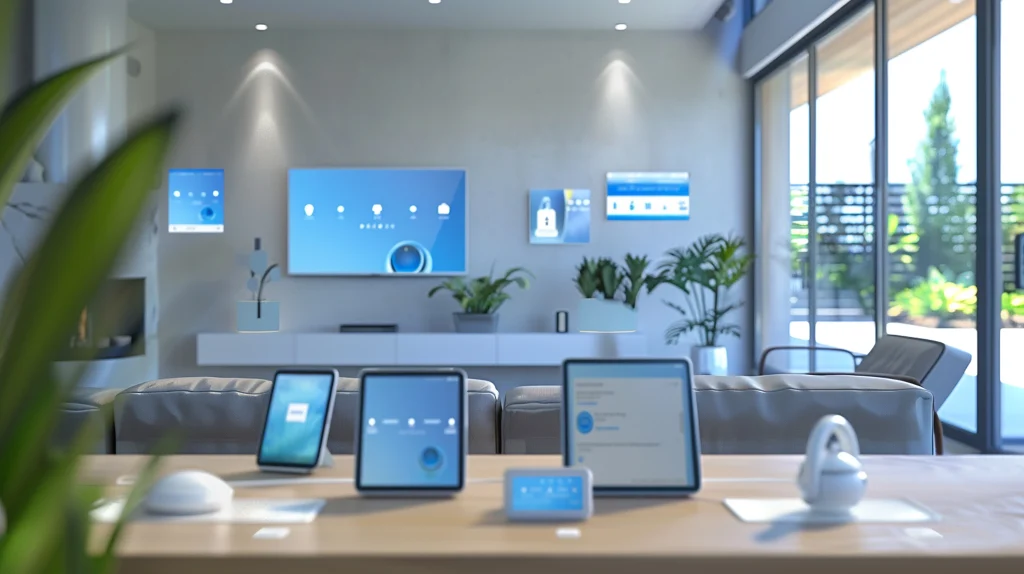A Rapid Shift in Work Dynamics
The way we work has changed significantly over the last 50 years. The impact on facilities and our workspace has been exponential. As FM professionals, how are we being affected?
In the last decade, the workplace has experienced dramatic, unprecedented changes—and we’re only at the beginning. Remote work, new organizational structures, and employee demand for inspirational, inclusive spaces all shape FM strategy. Younger, tech-savvy, post-COVID employees will push this transformation even further.
From Cubicles to Collaborative Workspaces
Creative, project-based teamwork is now conducted across multiple locations, enabled by digital tools. The old cubicle is obsolete. In its place:
-
Collaborative spaces
-
Individual quiet zones
-
Meeting rooms of various sizes
-
Sit-stand desks
-
Flexible, reconfigurable layouts
Strategic Opportunity for Facility Managers
The big question for Facility Managers is:
How can we grab hold of this opportunity to impact the workplace like never before—while supporting our organization’s new direction, tech, and workforce?
Are we still focused on cost savings as in the past—or are we shifting toward value creation?
We’re no longer just managing the “building envelope.” We’re now a critical support arm of the C-suite’s goals and objectives.
The Decentralized Workplace: Work Can Happen Anywhere
Work and workplace are now deeply interconnected, yet more geographically untethered than ever. People work from:
-
Homes
-
Coffee shops
-
Community workspaces (e.g., WeWork)
-
Neighborhood hubs (e.g., Radious)
-
Traditional offices
The Rise of Smart Buildings and Evolving CRE Strategy
Smart buildings are replacing traditional offices filled with cubicles. Corporate Real Estate (CRE) is shifting as organizations decentralize to stay close to talent. Spaces are being reimagined—and FM and CRE are becoming strategic partners in shaping the workplace of the future.
The End of Paper-Driven Work
We are no longer tied to paper and file cabinets, accelerating the pace of work. This digital transformation is reshaping how—and where—we work, and changing how FM and CRE manage real estate portfolios.
Knowledge Workers and the New Workplace
The Shift from Routine to Creative Work
The workforce has evolved from paper shufflers to knowledge workers—people who bring insight, creativity, and subject matter expertise. These workers tackle non-routine problems and innovate solutions.
Peter Drucker predicted this:
“The most important contribution in the 21st century must be a similar increase in the productivity of knowledge work.”
Workplace Design for Knowledge Work
There is no one-size-fits-all workplace. Knowledge workers have varied styles and needs. That’s why flexible environments are key, including:
-
Phone booths
-
Open collaboration zones
-
Solo workspaces
-
Conference rooms in multiple sizes
While knowledge work is mobile, don’t underestimate the office. If the environment supports their needs, knowledge workers will still show up.
The Role of New Technology
A key enabler of this shift is IT and mobile tech. Think:
-
Smartphones
-
Laptops
-
WiFi and Bluetooth
-
AI and machine learning
-
Real-time transcription
-
Robotics
-
IoT and collaboration platforms

Physical office space is becoming less critical, while environments that promote creativity, performance, and proximity to where people live are becoming more valuable.
Generational Influence: Gen X and Gen Y
The Drivers of Workplace Change
Workplaces have always evolved, but not as quickly as in the past two decades—largely due to the influence of Gen X.
Now, Gen Y (Millennials) is not just accelerating change—they are demanding it.
What Millennials Expect from the Workplace
-
Tech Integration – They use multiple digital platforms and expect seamless connectivity.
-
Continuous Feedback – They want guidance, coaching, and clear paths for development.
-
Achievement Focus – They value meaningful work over just a paycheck.
-
Team Culture – Collaboration is essential; they thrive in group environments.
-
Work-Life Balance – Flexibility to attend life events is a must.
The Pressure of Globalization
The Global Workforce and FM Strategy
Gen Y’s influence aligns with globalization. Flexible schedules, hybrid roles, and location independence are essential.
The world is smaller. Talent is everywhere. This requires FM to consider:
-
Hiring and working across cultures
-
Time zones
-
Language and process variations
-
Tech-enabled collaboration
-
Distributed talent retention strategies
The Competitive Landscape
There’s a global race to attract and retain top talent. Job roles, responsibilities, and workflows are increasingly defined by geography, not proximity. FM strategy must adapt to this dispersed reality.
Evolving Facility Strategy
The Need for Flexibility and Agility
The way we work, where we work, and how we use workspaces is changing fast. FM strategies must lead this evolution. Core needs now include:
-
Open, movable workspaces
-
Shared desks
-
Flexible configurations (e.g., DIRTT)
-
HVAC control by zone
-
Sensors to track real-time use
We are an agile workforce—and we need agile facility strategy.
Smarter Buildings Through Data
The smart building is here. FM will soon receive detailed analytics from:
-
Temperature and humidity sensors
-
CO₂ monitors
-
Occupancy data
The result: personalized, efficient environments that adapt to user needs.
Becoming a Strategic Business Partner
FM is now critical to:
-
Attracting top talent
-
Supporting productivity and innovation
-
Enhancing company culture
-
Increasing customer satisfaction
To align with business strategy, FM must integrate with HR, IT, and leadership—using KPIs like:
-
Knowledge productivity
-
Cultural impact
-
Adaptability and innovation
From Budget Control to Strategic Impact
FM has traditionally focused on cost control. That’s still relevant, but the shift is toward per-occupant value and strategic impact. FM must reframe its mission as a value-adding partner to the C-suite.
Sustainability in FM and CRE
Sustainability is now a core focus of both FM and CRE. Responsibilities include:
-
Energy and water management
-
Waste and recycling
-
Carbon footprint reduction
-
Sustainable procurement and life-cycle planning
Board-level interest, regulatory demands, and stakeholder pressure make this non-negotiable.
Smarter Use of Space
Office space is often underused—averaging just 45–50% peak occupancy. Better utilization is possible with:
-
Flexible layouts
-
Activity-based working
-
Mobile environments
Case Study: UK Home Office (IFMA 2011)
After consolidating from seven to two buildings and adopting flexible work strategies:
-
Utilization rose from 56% to 80%
-
Supported headcount increased by 30%
-
FM cost per occupant dropped 20%
-
Higher usage led to increased service expectations
Embracing the Right Technology
Current Tech in FM:
-
BIM – Building modeling
-
BAS – Automation for lighting, HVAC
-
ASMS – Security and access management
-
GIS – Geographic team/property mapping
-
Digital Signage – Space wayfinding
-
Energy Optimization Tools
Emerging Tech:
-
Sensor Networks – Real-time workplace analytics
-
Smart Grids – Efficient energy use
-
RFID – Tracking people and assets
This technology supports the demands of New Ways of Working.
Turning Data into Action
With integrated systems (BIM, BAS, RFID, ASMS), FM teams can analyze:
-
How people work
-
Where collaboration happens
-
How space impacts performance
Combined with HR data and employee surveys, FM evolves from asset management to performance enablement.
Client-Centric Facility Services
As buildings become more customized, FM must move beyond standardized services and deliver client-specific, flexible support aligned with individual company goals.
Technology and expertise make this scalable—but it requires skilled, empathetic frontline teams.
Partnering with the Right Service Providers
The future of FM depends on collaboration. The best service providers will:
-
Be strategic
-
Embrace sustainability
-
Leverage new technologies
-
Provide agile, personalized support
Strong, long-term partnerships will help companies optimize their workplaces and focus on core priorities—like talent acquisition and growth.
Summary: Seven Keys to the Future of FM
Work has changed—and FM must change with it. The core areas of evolution:
-
Become a proactive strategic partner
-
Focus on value, not just cost
-
Prioritize sustainability
-
Use space more efficiently
-
Adopt enabling technologies
-
Make data a core product
-
Deliver personalized, flexible service
Final Note
This is a major shift from how facility management has operated for decades. To succeed, Subject Matter Experts (SMEs) will be vital in guiding this evolution.
Left Coast Facilities Consulting is here to help. We’ll guide your organization through the process and build a roadmap toward strategic FM excellence.



